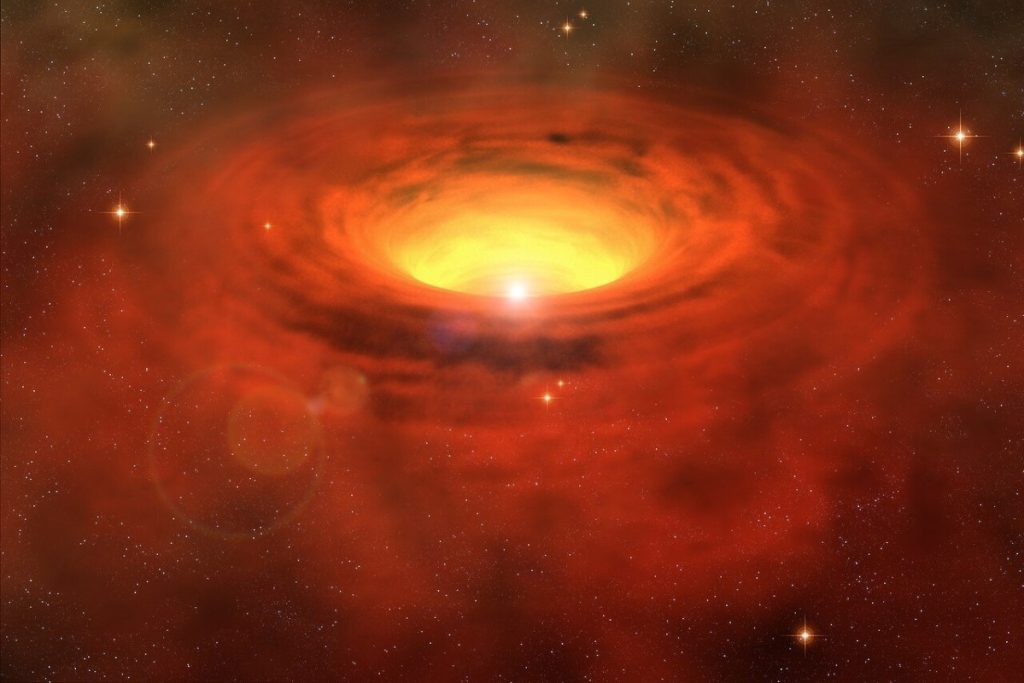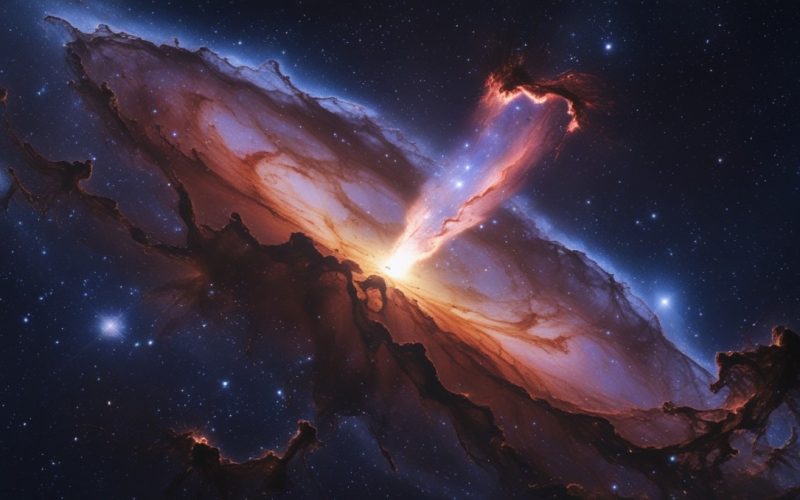WOH G64’s Astonishing Shrinkage Signals an Explosive Finale
WOH G64, a red supergiant star located in the Large Magellanic Cloud, has undergone a dramatic transformation, shrinking to nearly half its original size in just a few years.
Observed between 2021 and 2024, this rapid change—unprecedented for a star once estimated to be 1,500 times the diameter of the Sun—has astronomers speculating that WOH G64 may be on the brink of a supernova explosion. This cosmic giant, situated 160,000 light-years from Earth, is offering a rare real-time glimpse into the chaotic final stages of a massive star’s life cycle.
Event Details and Significance
WOH G64, first cataloged in 1981, is one of the largest known red supergiants, a class of massive stars that have exhausted their core hydrogen and are now fusing heavier elements in their outer envelopes. Typically, such stars evolve over timescales spanning thousands or millions of years.
However, the recent observations, detailed in a New Scientist article published in early 2025, indicate that WOH G64’s diameter has plummeted from approximately 1,500 solar diameters to around 750 in a mere three years.
This rapid shrinkage, detected through advanced telescopic imaging and spectroscopy, suggests internal instabilities that could culminate in a supernova—a cataclysmic explosion that would scatter heavy elements across the cosmos and potentially outshine entire galaxies for weeks.
The speed of this transformation is what sets WOH G64 apart. “Stars don’t typically change this fast within a human lifetime,” notes astrophysicist Dr. Elena Rossi, a contributor to the study. “This could be a precursor to a supernova, giving us a front-row seat to stellar death.” If WOH G64 does explode, it would mark a significant event, providing critical data on the processes driving massive stars to their explosive ends.
Historical Context
WOH G64 has been a subject of fascination since its discovery in the Large Magellanic Cloud, a satellite galaxy of the Milky Way. Initially identified through infrared surveys due to its immense size and cool surface temperature (around 3,400 K), it was classified as a red supergiant nearing the end of its life.

Over decades, astronomers tracked its pulsations and mass loss, as it shed material into a surrounding nebula. However, its recent behavior deviates sharply from historical patterns, where gradual expansion or contraction was expected—not a sudden halving of its size.
Red supergiants like WOH G64 are known to be volatile, often ejecting shells of gas and dust as they approach their demise. Yet, the timescale of this latest transformation challenges existing stellar evolution models, which predict such dramatic shifts over far longer periods.
Similar Cases and Research
This isn’t the first time a star’s unusual behavior has sparked supernova speculation:
-
Betelgeuse (2019-2020): The red supergiant Betelgeuse, visible in the Orion constellation, dimmed dramatically, dropping to 36% of its normal brightness. Initial theories suggested an imminent supernova, but subsequent analysis revealed the dimming was due to dust clouds expelled by the star. Betelgeuse remains a candidate for a future explosion, though no precise timeline exists.
-
2005 Supernova Anomaly: In 2005, astronomers observed a massive young star explode as a supernova far earlier than models predicted, as reported by New Scientist. This event, dubbed “before its time,” suggested that some stars bypass expected evolutionary stages, a possibility now considered for WOH G64.
-
White Dwarf with a Metal Scar (2025): A recent study highlighted a white dwarf star bearing a metallic scar from consuming a planet, illustrating the diverse fates of stellar remnants. While not a direct parallel, it underscores the unpredictable nature of stellar evolution.
These cases highlight the complexity of predicting stellar behavior. WOH G64’s rapid transformation adds a new layer, suggesting that massive stars may undergo sudden, dramatic shifts undetected in prior observations.
Implications and Future Prospects
If WOH G64 explodes, the supernova could illuminate the Large Magellanic Cloud, visible even from Earth with modest telescopes. Beyond its spectacle, the event would yield a treasure trove of data on stellar interiors, nucleosynthesis, and the precursors to supernovae.
Astronomers are now ramping up observations with instruments like the James Webb Space Telescope and ground-based arrays to monitor changes in brightness, size, and chemical composition.
However, uncertainties remain. The exact cause of WOH G64’s shrinkage—whether core collapse, rapid mass loss, or an unseen companion’s influence—is still under investigation. “We’re witnessing something extraordinary, but we need more data to pin down the mechanism,” says Dr. Rossi.
WOH G64’s rapid transformation is a cosmic anomaly that could rewrite our understanding of stellar life cycles. As scientists race to decode its fate, this red supergiant stands as a testament to the universe’s capacity for surprise—and a reminder of the explosive potential lurking in the stars above.





